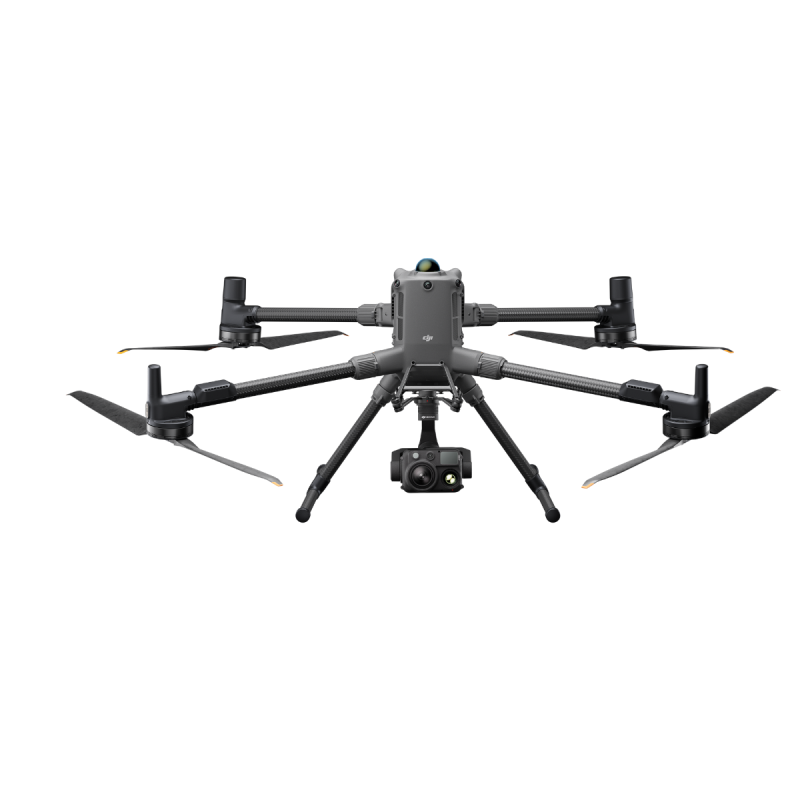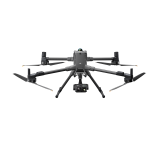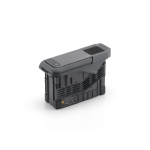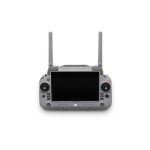Upgraded Payload Capacity
Depending on the task, Matrice 400 can be equipped with the Zenmuse H30 Series, L2, P1, S1 Spotlight, Manifold 3[8], or third-party payloads.
Extended Flight Time
Matrice 400 has a forward flight time of up to 59 minutes [2], a hover time of up to 53 minutes [6], and an IP55 protection rating [7].
Power-Line-Level Obstacle Sensing
With LiDAR, mmWave radar and low-light fisheye vision sensors, Matrice 400 detects power lines across mountainous terrain — even in darkness [3].
Enhanced Intelligence & Efficiency
Matrice 400 boosts efficiency with Smart Detection, Smart AR Projection, Real-Time Terrain Following [9], and ship-based takeoff/landing [10].
Easier Automated Operations
Matrice 400 enables automated power line inspection flights with Zenmuse L2 [8], as well as Slope and Geometric Route planning with FlightHub 2.
Comprehensive Accessory Upgrades
Matrice 400 works with RC Plus 2 Enterprise Enhanced, Cellular Dongle 2 [11], TB100 battery, TB100C tethered battery, and BS100 battery station.
Specs
Aircraft
Takeoff Weight (with propellers):
Without Batteries: 5020±20 g
With Batteries: 9740±40 g
The actual product weight may vary due to differences in batch materials and external factors.
Max Takeoff Weight: 15.8 kg
Dimensions: Unfolded: 980×760×480 mm (L×W×H) (with landing gear)
Folded: 490×490×480 mm (L×W×H) (with landing gear and gimbal)
Maximum dimensions excluding propellers.
Aircraft carrying case dimensions: 779×363×528 mm (L×W×H)
Max Payload: 6 kg
The 6 kg payload is measured at the third gimbal connector under sea level conditions. Payload capacity decreases as altitude increases. For details, refer to the official user manual.
Propeller Size: 25 inches
Diagonal Wheelbase: 1070 mm
Max Ascent Speed: 10 m/s
Max Descent Speed: 8 m/s
Max Horizontal Speed (at sea level, no wind): 25 m/s
Max Takeoff Altitude: 7000 m
Max Flight Time (no wind): 59 minutes
Measured with the aircraft flying forward at a constant speed of 10 m/s in a windless environment at sea level, carrying only the H30T (total weight 10,670 g), and from 100% battery level until 0%. Data is for reference only. Actual experience may vary depending on the environment, usage, and firmware version.
Max Hover Time (no wind): 53 minutes
Measured with the aircraft hovering in a windless environment at sea level, carrying only the H30T (total weight 10,670 g), and from 100% battery level until 0%. Data is for reference only. Actual usage time may vary depending on the flight mode, accessories, and environment.
Max Flight Distance (no wind): 49 km
Measured by the aircraft flying forward at a constant speed of 17 m/s in a windless environment at sea level, without external payloads, and from 100% battery level until 0%. Actual experience may vary depending on the environment, usage, and firmware version.
Max Wind Speed Resistance: 12 m/s
Max wind speed resistance during takeoff and landing.
Max Yaw Angular Velocity: Yaw: 100°/s
Max Pitch Angle: 35°
Operating Temperature: -20° to 50° C (-4° to 122° F) (without solar radiation)
Global Navigation Satellite System (GNSS): GPS + Galileo + BeiDou + GLONASS*
* GLONASS is supported only when the RTK module is enabled.
Equipped with standard airborne ADS-B In receiver and dual antennas, supporting reception up to 20 km.
Hovering Accuracy Range (with moderate or no wind): Vertical:
±0.1 m (with vision positioning)
±0.5 m (with satellite positioning)
±0.1 m (with RTK positioning)
Horizontal:
±0.3 m (with vision positioning)
±0.5 m (with satellite positioning)
±0.1 m (with RTK positioning)
RTK GNSS Accuracy: RTK Fix:
1 cm + 1 ppm (horizontal), 1.5 cm + 1 ppm (vertical)
RTK Heading: Supports RTK heading with an accuracy better than 2°
Airborne ADS-B In: Equipped with standard airborne ADS-B In receiver and dual antennas, supporting reception up to 20 km.
Internal Storage: N/A
Ports: USB-C Debug Port × 1: USB 2.0
E-Port V2 × 4: At the lower part of the drone, with 120W single-port power
Cellular Dongle 2 Interface × 2: On the underside of the drone
Propeller Model: 2510F
Beacon: Built into the aircraft
Ingress Protection Rating: IP55
The rating is not permanently effective and may decrease due to product wear and tear.
Gimbal
Maximum Payload for Single Gimbal Connector: 1400 g.
If the payload exceeds 950 g, the gimbal damper lifespan will decrease from 1000 hours to 400 hours.
Maximum Payload for Dual Gimbal Connector: 950 g
Maximum Payload for Third Gimbal Connector: 3 kg for quick-release port, 6 kg for screw lock fastening
Sensing
Sensing Type: Omnidirectional binocular vision system (surround view provided by full-color fisheye vision sensors)
Horizontal rotating LiDAR, upper LiDAR and downward 3D infrared range sensor
Six-direction mmWave radar
Forward: Measurement Range: 0.4-21 m
Detection Range: 0.4-200 m
Field of View (FOV): 90° (horizontal), 90° (vertical)
Backward: Measurement Range: 0.4-21 m
Detection Range: 0.4-200 m
Field of View (FOV): 90° (horizontal), 90° (vertical)
Lateral: Measurement Range: 0.6-21 m
Detection Range: 0.5-200 m
Field of View (FOV): 90° (horizontal), 90° (vertical)
Downward: Measurement Range: 0.5-19 m
The FOV to the front and rear is 160° and 105° to the right and left.
Operating Environment: Forward, Backward, Left, Right, and Upward:
Delicate texture on the surface, adequate light.
Downward:
The ground has rich textures and sufficient lighting conditions*, with a diffuse reflection surface and a reflectivity greater than 20% (such as walls, trees, people, etc.).
* Sufficient lighting conditions refer to an illuminance not lower than that of a nighttime city light scene.
Rotating LiDAR: Standard Measurement Range: 0.5-100 m @ 100,000 lux with 10% reflectivity target
Measurement Range for Power Line: 35 m @ 30° @ 10,000 lux for 21.6 mm steel-core aluminum stranded wire with a relative body tilt angle of 30° to the left and right
Field of View (FOV): 360° (horizontal), 58° (vertical)
Point-Frequency: 520,000 points/second
Laser Wavelength: 905 nm
Eye Safety Level: Class 1 (IEC60825-1:2014), eye-safe
Upper LiDAR (3D ToF): 0.5-25 m at night (reflectivity > 10%)
The FOV to the up and down is 60° and 60° to the right and left.
Downward 3D Infrared Range Sensor: Measurement Range: 0.3-8 m (reflectivity > 10%)
The FOV to the front and rear is 60° and 60° to the right and left.
mmWave Radar: Measurement Range for Power Line:
36 m for a 12.5mm steel-core aluminum stranded wire
50 m for a 21.6mm steel-core aluminum stranded wire
FOV: ± 45° (horizontal and vertical)
The mmWave radar function is unavailable in some countries/regions.
FPV Camera
Resolution: 1080p
Field of View (FOV): DFOV: 150°
HFOV: 139.6°
VFOV: 95.3°
Frame Rate: 30fps
Night Vision: Starlight Grade
Video Transmission
Video Transmission System: DJI O4 Enterprise Enhanced Video Transmission System
Live View Quality: Remote Controller: 3-channel 1080p/30fps
Operating Frequency and Transmitter Power (EIRP): 902-928 MHz: < 30 dBm (FCC), < 16 dBm (MIC)
1.430-1.444 GHz: < 35 dBm (SRRC)
2.4000-2.4835 GHz: < 33 dBm (FCC), < 20 dBm (CE/SRRC/MIC)
5.150-5.250 GHz: < 23 dBm (FCC/CE)
5.725-5.850 GHz: < 33 dBm (FCC), < 14 dBm (CE), < 30 dBm (SRRC)
Operating frequency allowed varies among countries and regions. Refer to local laws and regulations for more information.
Max Transmission Distance (unobstructed, free of interference): 40 km (FCC)
20 km (CE/SRRC/MIC)
Measured in an unobstructed environment free of interference. The above data shows the farthest communication range for one-way, non-return flights under each standard. During your flight, please pay attention to RTH reminder on the DJI Pilot 2 app.
Max Transmission Distance (with interference): Strong interference (dense buildings, residential areas, etc.): approx. 1.5-6 km
Medium interference (suburban counties, city parks, etc.): approx. 6-15 km
Weak interference (open spaces, remote areas, etc.): approx. 15-40 km
Data is tested under FCC standard in unobstructed environments of typical interference. Only to serve as a reference and provides no guarantee as to the actual flight distance.
Max Download Speed: Standard Mode: 80Mbps Downlink
Playback Download: < 25 MBps
Single-Channel Bitrate: ≤ 12 Mbps
The above data was measured under conditions where the aircraft and remote controller were in close proximity without interference.
Antenna: WLAN Antenna × 8: 6 vertically polarized antennas and 2 horizontally polarized antennas
sub2G Antenna × 2: 2 vertically polarized antennas
4G Antenna × 4
Operating Mode: 2T4R
Others: Supports Dual Control Mode and 2-channel Cellular Dongle 2
Battery
Model: TB100
Capacity: 20254 mAh
Standard Voltage: 48.23 V
Max Charging Voltage: 54.6 V
Cell Type: Li-ion 13S
Energy: 977 Wh
Weight: 4720 ± 20 g
Charging Temperature: 5° to 45° C (41° to 113° F)
Discharging Temperature: -20° to 75° C (-4° to 122° F)
Battery Heating: Single Battery: Support
Onboard: Support
Battery Station: Support
Discharge Rate: 4C
Max Charging Power: 2C
Low-Temperature Charging: Supports low-temperature self-heating charging
Cycle Count: 400
Intelligent Battery Station
Model: BS100
Net Weight: 11.8 kg
Dimensions: 605×410×250 mm (L×W×H)
Supported Batteries: TB100 Intelligent Flight Battery, TB100C Tethered Battery
WB37 Battery
Operating Temperature: -20° to 40° C (-4° to 104° F)
Input: 100-240 V (AC), 50-60 Hz, 10 A
Output: USB-C:
TB100 Battery Interface:
100-110 V: Approx. 1185 W
110-180 V: Approx.1474 W
180-240 V: Approx. 2184 W
WB37 Battery Interface:
100-240 V: Approx. 52 W
USB-C:
5.0 V 3.0 A, 9.0 V 3.0 A, 12.0 V 3.0 A, 15.0 V 3.0 A, 20.0 V 3.25 A
Number of Charging Channels: Three TB100 and two WB37 batteries
Charging Mode: Ready-to-Fly Mode 90%; Standard Mode 100%
Supports Fast Charging Mode and Silent Mode
Charging Time: TB100/TB100C Battery From 0% to 100%:
220 V: 45 minutes (Fast Charging Mode); 110 minutes (Silent Mode)
110 V: 70 minutes (Fast Charging Mode); 110 minutes (Silent Mode)
Charging time is measured in a test environment with a temperature of 25° C.
DJI RC Plus 2 Enterprise Enhanced
Video Transmission System: DJI O4 Enterprise Enhanced Video Transmission System
Max Transmission Distance (unobstructed, free of interference): 40 km (FCC)
20 km (CE/SRRC/MIC)
Measured in an unobstructed environment free of interference. The above data shows the farthest communication range for one-way, non-return flights under each standard. During your flight, please pay attention to RTH reminder on the DJI Pilot 2 app.
Video Transmission Operating Frequency and Transmitter Power (EIRP): 902-928 MHz: < 30 dBm (FCC), < 16 dBm (MIC)
1.430-1.444 GHz: < 35 dBm (SRRC)
2.400-2.4835 GHz: < 33 dBm (FCC), < 20 dBm (CE/SRRC/MIC)
5.150-5.250 GHz: < 23 dBm (FCC/CE)
5.725-5.850 GHz: < 33 dBm (FCC), < 14 dBm (CE), < 30 dBm (SRRC)
Operating frequency allowed varies among countries and regions. Refer to local laws and regulations for more information.
Antenna: 2T4R, 2.4GHz/5.8GHz multi-beam high-gain antenna
sub2G Module: 2T2R
Enhanced Transmission: Supports DJI Cellular Dongle 2
Wi-Fi Protocol: Wi-Fi Direct, Wireless Display, IEEE 802.11 a/b/n/ac/ax
Supports 2×2 MIMO Wi-Fi, dual-band simultaneous (DBS) support for dual MAC, with data rates up to 1774.5 Mbps (2×2 + 2×2 11ax dual-band simultaneous)
Wi-Fi Operating Frequency: 2.4000-2.4835 GHz
5.150-5.250 GHz
5.725-5.850 GHz
5.2 and 5.8GHz frequencies are prohibited in some countries. In some countries, the 5.2GHz frequency is only allowed for use in indoor.
Wi-Fi Transmitter Power (EIRP): 2.4 GHz: < 26 dBm, < 20 dBm (CE/SRRC/MIC)
5.1 GHz: < 23 dBm (FCC/CE/SRRC/MIC)
5.8 GHz: < 23 dBm (FCC/SRRC), < 14 dBm (CE)
Bluetooth Protocol: Bluetooth 5.2
Bluetooth Operating Frequency: 2.400-2.4835 GHz
Bluetooth Transmitter Power (EIRP): < 10 dBm
Screen Resolution: 1920 × 1200
Screen Size: 7.02 inches
Screen Frame Rate: 60fps
Brightness: 1400 nits
Touchscreen Control: 10-Point Multi-Touch
Built-in Battery: 2S2P High Energy Density 18650 Lithium-ion Battery (6500 mAh @ 7.2 V) 46.8 Wh
External Battery: Optional, WB37 (4920 mAh @ 7.6 V) 37 Wh
Charging Type: Supports PD fast charging, with a maximum 20V/3.25A USB Type-C charger
Storage Capacity: RAM 8G + ROM 128G UFS + expandable storage via microSD card
Charging Time: 2 hours for internal battery; 2 hours for internal plus external batteries.
When remote controller is powered off and using a standard DJI charger.
Internal Battery Runtime: 3.8 hours
External Battery Runtime: 3.2 hours
Output Port: HDMI 1.4
Indicators: Status LED, battery level LED, connection status LED, tricolor light, brightness adjustable according to ambient light
Speaker: Supports buzzer
Audio: Array MIC
Operating Temperature: -20° to 50° C (-4° to 122° F)
Storage Temperature: Within one month: -30° to 45° C (-22° to 140° F)
One to three months: -30° to 35° C (-22° to 113° F)
Three months to one year: -30° to 30° C (-22° to 86° F)
Charging Temperature: 5° to 40° C (41° to 104° F)
Supported Aircraft Model: Matrice 400
Global Navigation Satellite System: GPS + Galileo + BeiDou
Dimensions: 268×163×94.5 mm (L×W×H)
Width including external antenna folded, thickness including handle and controller sticks.
Weight: 1.15 kg (without external battery)
Model: TKPL 2
System Version: Android 11
External Interfaces: HDMI 1.4, SD 3.0, USB-C with OTG support, max 65W PD charging, USB-A with USB 2.0 support
Accessories: Strap/waist support
Supported Products
DJI Products Compatible With Matrice 400: Gimbal Cameras: Zenmuse H30, Zenmuse H30T, Zenmuse L2 and Zenmuse P1
Accessories: Zenmuse S1 (drone spotlight), Zenmuse V1 (drone speaker), Manifold 3, DJI RC Plus 2 sub2G SDR Module, DJI Cellular Dongle 2
RTK Station: D-RTK 3 Multifunctional Station, D-RTK 2 Mobile Station
Ecosystem Accessories: DJI X-Port, DJI E-Port V2 Development Kit, DJI E-Port V2 Coaxial Cable Kit, DJI SKYPORT V3 Adapter Set, DJI SKYPORT V3 Coaxial Cable Kit
In the box
Aircraft (with propeller holder) × 1
Remote Controller (with DJI RC Plus 2 sub2G SDR Module) × 1
Intelligent Flight Battery × 1
BS100 Intelligent Battery Station × 1
Carrying Case × 1
Propellers (Pair) × 1
Propeller Washers and Screws × 6
Remote Controller Strap and Bracket (with two screws) × 1
WB37 × 1
Landing Gear × 2
USB C to USB C Cable × 1
Screws and Tools × 1
Cleaning Tools × 1
Rubber Port Covers and Screws × 1
Power Cable × 1
Gimbal Damper × 1
* Always check and strictly abide by local laws and regulations before use.
** All data on this page was collected with a production model of DJI Matrice 400 in a controlled test environment. Actual experience may vary depending on the environment, usage, and firmware version.
1. The 6 kg payload is measured at the third gimbal connector under sea level conditions. Payload capacity decreases as altitude increases. For details, refer to the official user manual.
2. Measured with the aircraft flying forward at a constant speed of 10 m/s in a windless environment at sea level, carrying only the H30T (total weight 10,670 g), and from 100% battery level until 0%. Data is for reference only. Actual experience may vary depending on the environment, usage, and firmware version.
3. Power line obstacle sensing capability: When directly facing a transmission line (21.6 mm steel-core aluminum stranded wire), obstacle sensing is supported at speeds up to 25 m/s. When both transmission lines (21.6 mm steel-core aluminum stranded wire) and distribution lines (12 mm steel-core aluminum stranded wire) are present, obstacle sensing is supported at speeds up to 17 m/s. Obstacle sensing performance may vary depending on environmental conditions (such as cloud, fog, rain, or snow), as well as the material, position, and shape of the target object. Due to the limitations of the safety system, the aircraft cannot actively avoid fast-moving objects; please fly with caution in such environments. Refer to the user manual for more information. The mmWave radar function is unavailable in some countries/regions.
4. This feature is unavailable in countries or regions without 5GHz frequency support. Refer to local laws and regulations for more information.
5. Operating frequency allowed varies among countries and regions. Refer to local laws and regulations for more information.
6. Measured with the aircraft hovering in a windless environment at sea level, carrying only the H30T (total weight 10,670 g), and from 100% battery level until 0%. Data is for reference only. Actual usage time may vary depending on the flight mode, accessories, and environment.
7. Please follow the requirements stated in the IP55 protection rating instructions. Measured in a controlled environment. The IP rating is not permanently effective and may decrease due to product wear and tear.
8. Sold separately.
9. DJI FlightHub 2 required.
10. It is recommended to use when the ship speed is below 10 knots and the wind speed is below 5 m/s; exercise caution in other environments. It is recommended to reserve a 3 m × 3 m takeoff and landing space on the deck. Standard landing point pattern files are available on the download page.
11. To use 4G Enhanced Transmission, the remote controller must be equipped with the DJI Cellular Dongle 2 (sold separately) or connected to the internet via Wi-Fi. This service is not available in some countries and regions. Please consult your local dealer for details.








